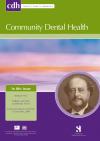Community Dental Health

- Cover Date:
- September 2013
- Print ISSN:
- 0265 539X
- Vol:
- 30
- Issue:
- 3
Using GIS to analyse dental practice distribution in Indiana, USA
doi:10.1922/CDH_3175Kruger06
Objective: Dentistry across the globe faces significant workforce issues with mal-distribution at most levels of analysis being a substantial issue. This study was the first to apply high resolution Geographic Information Systems (GIS) tools to map every private dental practice in the State of Indiana against a backdrop of population demographics. The hypothesis tested in the study is that there is an even density distribution of dental practices across Indiana. Method: Adult population data were obtained from the United States Census of Population and divided by census tracts. The physical address for each dental practice in Indiana was collated from a comprehensive web-based search and the two datasets were integrated using GIS tools. Result: The whole adult population of Indiana (5 million) was distributed across 1,511 census tracts. Across these tracts a total of 2,096 separate private general dental practices were distributed. There were a total of 679 tracts (45%) without a dental practice while 2.5% of tracts had 8 or more practices. Conclusion: The practice to population ratio (1:2,384) for the whole State was not significantly different for those living within 50km (31 miles) or 25km (15 miles) of the seven major city centers, and mean personal income (by residency location) did not appear to significantly influence practice location.
Key words: dentistry, GIS, population access, Indiana
- Article Price
- £15.00
- Institution Article Price
- £
- Page Start
- 155
- Page End
- 160
- Authors
- R. Kurcz, E. Kruger, M. Tennant
Articles from this issue
- Title
- Pg. Start
- Pg. End
- Dental Public Health in Action - Oral health education and disease prevention in primary dental care: Insight from a pilot intervention targeting children aged 0-7 years in northeast England
- 134
- 137
- Longitudinal register study of attendance frequencies in public and private dental services in Finland
- 143
- 148
- The geographic distribution of patients seeking emergency dental care at the Royal Dental Hospital of Melbourne, Australia
- 149
- 154
- Oral health care services utilisation in the adult US population: Medical Expenditure Panel Survey 2006
- 161
- 167
- Dental infections increase the likelihood of hospital admissions among adult patients with sickle cell disease
- 168
- 172
- Child oral health-related quality of life (COHQoL), enamel defects of the first permanent molars and caries experience among children in Western Australia
- 183
- 188
- Oral health-related quality of life in non-syndromic cleft lip and/or palate patients: a systematic review
- 189
- 195
